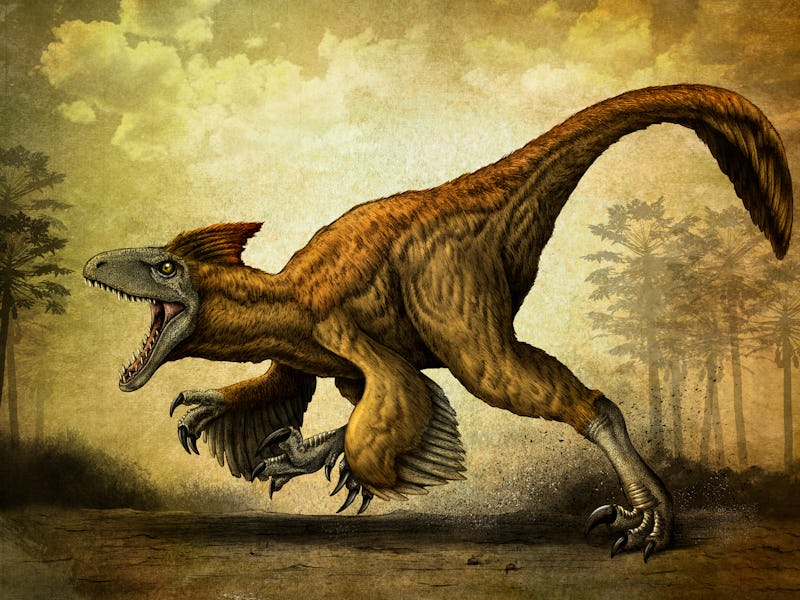How did the dinosaurs die? The answer is not what you think
Fire, brimstone, or a long, slow march to the grave?

In the 1940 Disney movie Fantasia, a key climactic scene shows the moment an asteroid hits Earth, destroying the many dinosaurs in waves of fire while Stravinsky’s epic the Rite of Spring crescendoes. It is apocalyptic — it may also be as real as Mickey Mouse.
In reality, dinosaurs didn’t perish in one sudden flash and there definitely wasn’t a Stravinsky soundtrack.
INVERSE is counting down the 20 science discoveries that made us say “WTF” in 2021. This is #4. See the full list here.
The discovery — Researchers are still learning about the Cretaceous-Paleogene (K-Pg) mass extinction event. This catastrophe occurred around 66 million years ago and wiped out 75 percent of life on Earth. But earlier this year, research published in the journal Nature Communications offered new clues, suggesting the mass death came piecemeal rather than all of a sudden.
The findings came as a shock to the scientists who made them:
“I actually did not expect such a long decline,” lead author Fabien Condamine, a research scientist at the French National Center for Scientific Research, told Inverse at the time.
What happened — According to the paper, the downfall of the dinosaurs likely began 76 million years ago — a whole 10 million years before the legendary asteroid hit.
The investigation also places the genesis of the mass extinction during a stretch of the Late Cretaceous called the Campanian period — and suggests new culprits not to do with space rocks.
An illustration of the Chicxulub impact that contributed to the demise of dinosaurs.
The two most impactful factors on this steady decline, according to the researchers, were:
- The changing climate
- The vanishing diversity of plant-eating dinosaurs
Climate change and biodiversity loss causing global tragedy and decline? Sounds familiar...
By the time any asteroids hit, the dinosaurs were already on the way out. Condamine and others hypothesize this decline was so severe that by the time the asteroid came, there was likely only one type of T-Rex left on Earth.
How they did it — Condamine and his team used a dataset compiled from 1,600 fossils of 247 dinosaur species from six major families, including the Tyrannosaurs and the plant-eating Hadrosaurs.
Using a tool called PyRate, they analyzed the rates of speciation, or the emergence of new species, and extinction from their fossil records. Herbivores, it seems, went into sharp decline. Using statistical models, they then determined the effects of external factors like species diversity and changing temperatures on dinosaurs as a whole.
Why it matters — Codamine explains that paleontologists have tended to view dinosaur extinction either as sudden or gradual. This research signals there’s plenty more work to be done.
For example, this investigation dovetails with other reports — also published this year — suggesting the Killer Asteroid was actually one of perhaps a few asteroids.
Further, while this team’s fossil collection is extensive, it is also incomplete — new dinosaurs are discovered frequently so there may be more we are missing about these captivating creatures.
INVERSE is counting down the 20 science discoveries that made us say “WTF” in 2021. This is #4. Read the original story here.